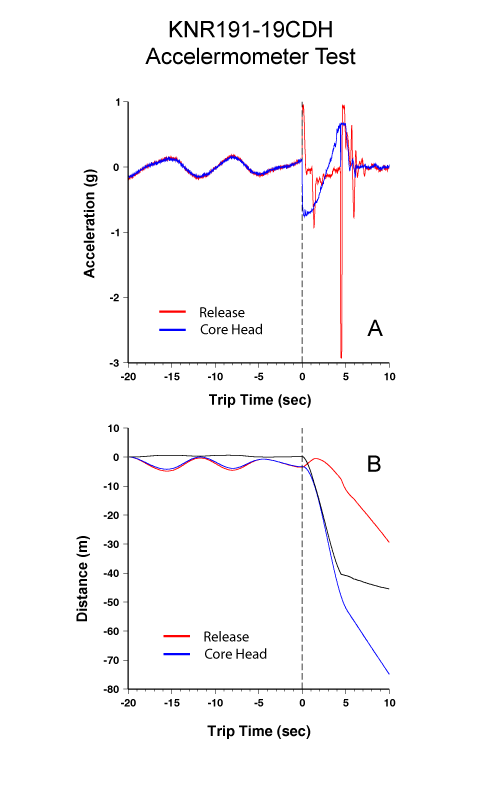Accelerometer Results
During several coring operations we inserted accelerometers in the release system and piston core head, which allow us to quantify the motion of the system at the time of core release and during sediment penetration (Figure 4). At the time of piston core release, the accelerometer on the release system recorded an upward acceleration of about 1 g, but lasting for a short enough time to limit upward movement to less than about 2 meters. Following release, the piston core fell, accelerating for about 2 seconds and decelerating for another 2 seconds. The core came to a "stop" five seconds after release, penetrating more than 40 meters into the sediment.
The violent collision of the piston and the core head between t = 4 and 5 seconds suggests that the piston corer was still penetrating the sediments when the piston reached the top of the core. It appears that this collision may have affected the "zeroing" of the accelerometers since the motion after t = 5 seconds implies that the core and release both continued downward even after reaching full sediment penetration. We know from the mud line on the exterior of the core head that penetration ended at about 43 m below the sea floor.
The small amount of upward movement of the release system minimized the upward movement of the piston within the core and therefore minimized coring disturbance of the sediments As a result, there is no evidence for sediment stretching in the upper section of the new cores.
